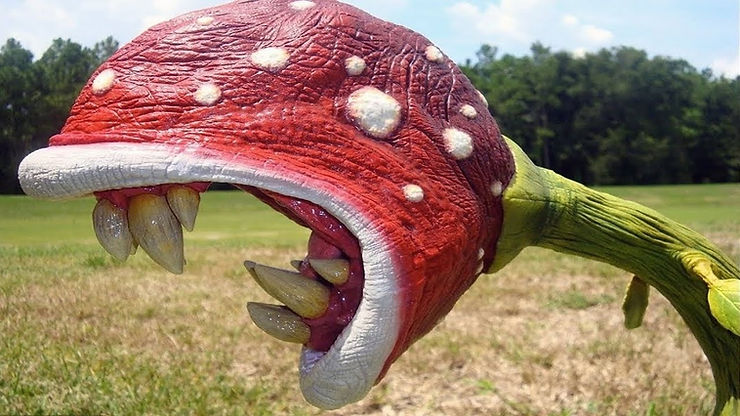By: Sophia Chen
There are many depictions of man-eating plants in movies, games, and theater, such as Piranha Plants from the Mario Bros. games and the African Strangler from The Addams Family. But could one possibly exist in real life?
To answer this question, we first have to look at smaller carnivorous plants-take the Venus flytrap. The flytrap has a mouth-like pair of leaves that attract insects using nectar. Once an unlucky fly lands on it, electrical signals make the two leaves snap shut and the plant uses enzymes to digest its meal.
Another example is the pitcher plant, which looks like a tube. Pitcher plants eat insects and often sometimes larger mammals, like rats and shrews. They also use nectar to attract their prey, which trips on their slippery leaves and falls into a pit of enzymes.
However, it requires a lot of energy for the plants to capture and digest their food. A plant big enough to capture a person would use up a lot of its valuable power just by sending electrical signals across its huge leaves. It also wouldn’t be able to move much because of its hard cell walls. The most logical way to create a trap for a human would be to simply let them fall into one.
“You could get a really tall, deep pitcher that would be effective as a pitfall trap for larger animals,” says Kadeem Gilbert, a botanist.
A huge pitcher plant could let a human drop into its stomach, but a person could just tear or pull apart its leaves and escape. A ginormous sundew plant could have big leaves covered in sticky slime that would cause a person to further enmesh themselves the more they struggled.
Of course, a person would need a reason to go near a plant as deadly as that. One lure could be a sweet or nutritious fruit, or a source of water.











